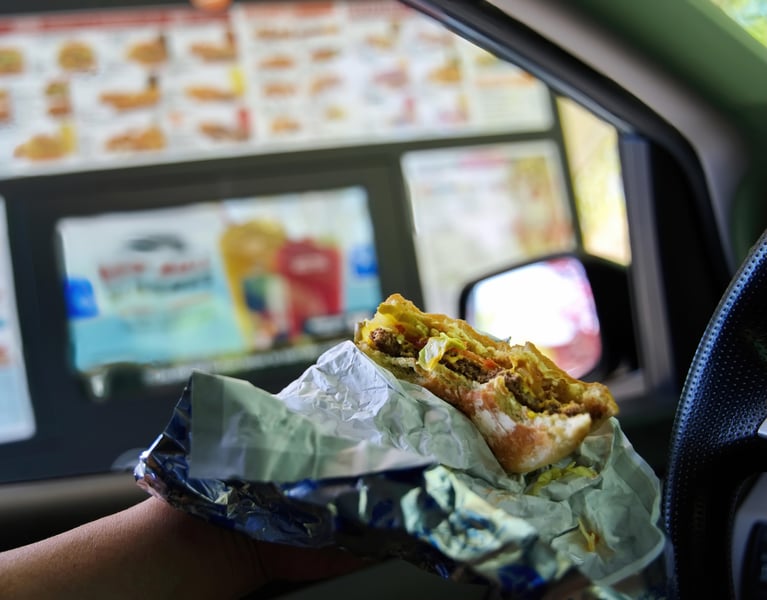ATTENTION ALL CUSTOMERS:
Due to a recent change in our pharmacy software system, all previous login credentials will no longer work.
Please click on “Sign Up Today!” to create a new account, and be sure to download our NEW Mobile app!
Thank you for your patience during this transition.
Get Healthy!

- Posted February 2, 2023
Do You Live in a 'Food Swamp'? It Could Be Raising Your Heart Risk
Americans who live near a "food swamp" may have a higher risk of suffering a stroke, a preliminary study finds.
A number of studies have looked at the health consequences of living in a so-called food desert -- areas with few grocery stores or other options for buying fresh food.
Food swamps are different: The term was coined to describe communities where fast food restaurants, convenience stores and other junk-food purveyors heavily outweigh healthier options like grocery stores and farmers' markets.
The new study looked at whether Americans' stroke risk varies based on how far their county of residence veers into food swamp territory.
It turned out it did: Among nearly 18,000 adults age 50 and older, those living in U.S. counties high on the food swamp scale had a 13% higher risk of suffering a stroke, compared to those in areas with more healthy options.
Many factors affect stroke risk, and it is hard to separate the importance of food swamps from those other variables, said lead researcher Dr. Dixon Yang, a postdoctoral fellow at Columbia University Irving Medical Center in New York City.
In fact, he said, the food swamp issue is intertwined with other factors in those communities. People living there may have lower incomes, little time or places for exercise, or less access to health care, for example.
But food swamps themselves can be a barrier to people living healthy lives.
"The results of this study are not surprising to me at all," said Dr. Anne Thorndike, immediate past chairwoman of the American Heart Association's Nutrition Committee.
Thorndike, who was not involved in the study, said that the foods typically available in food swamp areas -- often heavy in salt, sugar and unhealthy fats -- are the types that contribute to obesity, high blood pressure and diabetes. Those conditions are major risk factors for stroke.
Unfortunately, those processed and prepared foods also tend to be cheap and convenient, Thorndike pointed out.
"People are busy," she said. "And if they can't get to a grocery store that might be located in the next community over, they're going to go to these other stores that have fewer options for healthy choices."
Yang is scheduled to present the findings Feb. 9 at a meeting of the American Stroke Association in Dallas and online. Studies released at meetings are generally considered preliminary until they are published in a peer-reviewed journal.
The findings are based on 17,875 U.S. adults (average age: 64) participating in an ongoing health study. Yang's team used a standard measure, called the retail food environment index, to score each participant's county of residence on its ratio of restaurants and convenience stores to grocery stores and other healthier retailers.
Overall, just 28% of study participants lived in an area with a score lower than 5, which indicates a healthier array of food options. The rest, 72%, lived in counties with scores higher than 5, indicative of food swamps.
A score of 6, which was typical of the counties studied, means the area had six times more less-than-healthy food retailers than healthy ones.
Over six years, just under 4% of study participants suffered a stroke. The risk was 13% higher in food swamp areas.
Yang said the findings underscore the importance of social factors in Americans' cardiovascular health: All the diet advice in the world will not help if people cannot access healthy food.
"This is not just about individual choice," Yang said. "Following a healthy lifestyle is a struggle for a lot of people."
And the solution is not to simply open more grocery stores in food swamp areas, according to Thorndike.
"We need a whole-system approach to this," she said. That includes better nutrition education and programs and policies that help people afford high-quality food.
Americans who qualify for SNAP, or "food stamps," should be able to get that resource, Thorndike said, and food pantries that serve free meals to hungry people should offer healthy options.
"We do have a lot of great resources in this country for people," Thorndike said. "We have to make sure that they can access them equitably to get the nutritious food that they need."
More information
The American Heart Association has tips for improving heart health.
SOURCES: Dixon Yang, MD, postdoctoral fellow, Columbia University Irving Medical Center, New York City; Anne Thorndike, MD, MPH, director, Cardiac Lifestyle Program, Massachusetts General Hospital, Boston, and immediate past chairwoman, American Heart Association Nutrition Committee; American Stroke Association meeting, Dallas and online, Feb. 8, 2023






